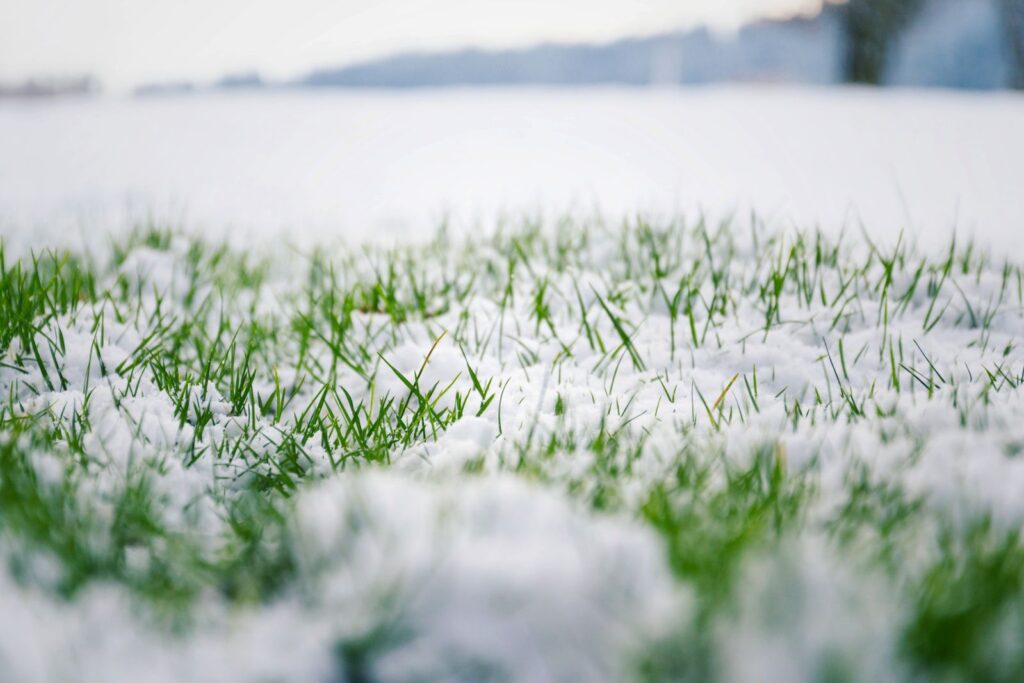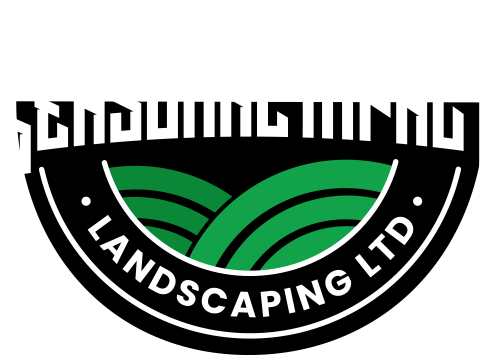
Winter Lawn Care: 5 Top Tips For Maintaining Your Lawn During the Frosty Season
A lawn is by far the most important component of commercial landscaping. If you are a commercial property owner, you have likely invested a handsome amount of money in making your lawn appear green and healthy. Lawn care is essential for making sure your investment doesn’t go down the drain. This is especially difficult during the frosty winter months, when snow accumulates in your lawn, weakening grass health and blemishing the overall look of your turf.
It gets even worse when you have warm-season grass such as Zoysia and Bermuda on your commercial lawn. The cold winter season isn’t conducive for such grass types at all. These grasses grow perfectly in the fall and spring seasons, but if any snow is deposited over them, it can turn them yellow like straw. On the flip side, cool-season grasses such as the Kentucky Bluegrass and Perennial Ryegrass are easy to maintain as they retain their natural green color, regardless of the weather.
Removing snow from a commercial lawn is difficult, but getting help from a professional snow removal service in North Toronto can resolve your problem.
If you are not ready to do that just yet, the following tips will help you take care of your commercial lawn during colder months.
Aerate the Lawn
Due to heavy foot traffic and heavy landscaping machinery, the grass tends to become compacted. Consequently, the soil dries out, which reduces the nutrient intake of the roots. Compacted grass also hinders drainage. Another great menace is the layer of debris between the soil and the exposed grass, also known as thatch. Thatch keeps air and water from reaching the roots.
The only solution to this problem is aeration. Aeration can be done manually or with an electric aeration tool. In this process, the aeration tool cuts through the debris and compactness, thus allowing the soil nutrients to come out to the surface. When these nutrients are combined with water, they nourish the soil and the roots, thus resulting in a healthier and greener lawn.
Aeration also improves drainage, which discourages a condition known as “crown hydration .”In this process, the grass tends to absorb water on warmer days. Later on, the water freezes inside the grass cells, thus damaging them. We recommend aerating your lawn before winter shows up. It can be incredibly hard otherwise.
Prevent Salt Damage
To melt the snow, people use numerous de-icing products, which are very effective. Sadly, these products contain salt, which isn’t too good for the grass in your lawn. When salt leeches into the grass, it leads to a condition known as physiological drought. This form of drought prevents your grass’s nutrient intake and results in patchy areas.
If using a de-icing product is inevitable, make sure not to go for the ones containing Sodium Chloride (NaCl). A better alternative to NaCl is Calcium Chloride.
Moreover, when you remove snow from the sidewalks, make sure not to dump it on the grass. Apart from the outcomes we have already discussed, snow from the sidewalks also contains residues from road treatment products. If you want to keep this residue from leeching into your grass, make sure to water your grass thoroughly as soon as the temperatures go up. By doing so, you will wash away the salt and minimize the extent of the damage. Moreover, try not to leave bags containing de-icing products too close to the grass.
Minimize Compaction
As we have already discussed in the beginning, compaction of the soil leads to dryness and poor drainage, which further results in malnutrition of the grass. Apart from heavy machinery, excessive foot traffic, and salt damage, the sheer amount of snow piled up also causes soil compaction.
Of course, sometimes, we don’t have a choice except for letting the snow stay on the lawn. If this is the case, it is better to spread it out rather than allow it to pile up and add to the compaction of the soil. When the snow is spread out, not only does the soil becomes less compact, but it also becomes easier for the snow to melt.
Another thing that adds to the compaction is parking cars on the lawn. Make sure there are no vehicles and heavy machinery positioned on the lawn. Also, the lawn is not a place to walk. It would help if you walked only on the sidewalks.
Use Sod and Seeds
Bare patches are common in commercial lawns. Sadly, they are difficult to notice as well. If you notice some in your lawn, make sure you cover them up with Sod. Sodding minimizes the likelihood of erosion and soil compaction. It needs to be done when the ground temperature is above the freezing level. Sodding should also be combined with thorough watering.
You can also consider seeding if you are trying to care for your lawn. Seeding will result in a much greener and healthier lawn. Ideally, the procedure is suitable for the fall, but if you want to give it a go during colder months, there is no harm in doing so.
To understand how seeding works, let’s consider the example of Zoysia grass. Zoysia grass tends to turn yellow during the colder months. You can seed the Zoysia grass with some annual Ryegrass to resolve this problem. Annual ryegrass is safe, as it doesn’t collide with your Zoysia.
When seeding, remember to mow the grass simultaneously.
Don’t Skimp on Watering
We have already discussed the harmful effects of winter drought. The solution to this problem is simple. All you need to do is water the grass regularly. However, watering must be done on days when the temperature is above 40 degrees Fahrenheit. Besides eliminating dehydration, regular watering will help eradicate pests such as the clover mite. This creepy crawler is found near buildings, and it survives by feeding on turf.
The Final Word
Other winter lawn maintenance techniques include weeding, raking, and debris removal. Managing so much in so little time is difficult, but not when you have a commercial lawn care service in Toronto. We provide the finest commercial lawn care and snow removal services in North Toronto. If you want to get in touch, visit our website today.
More Posts
Categories
Tags
Ready to Get Started?
Complete the form below and our staff will get in touch with you right away.



